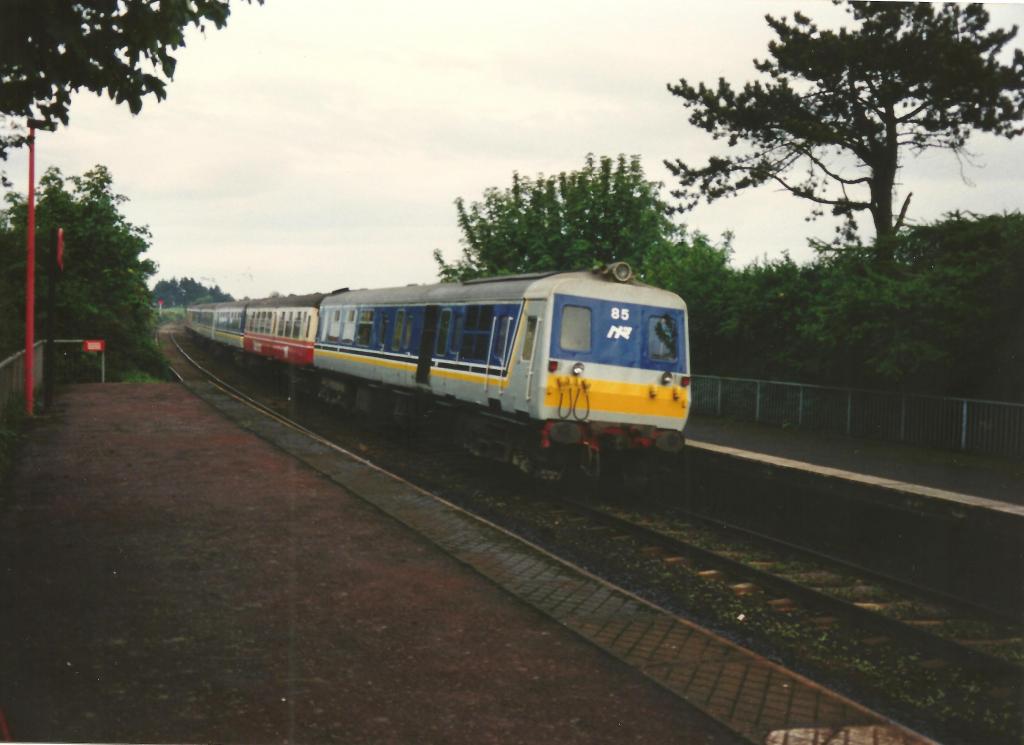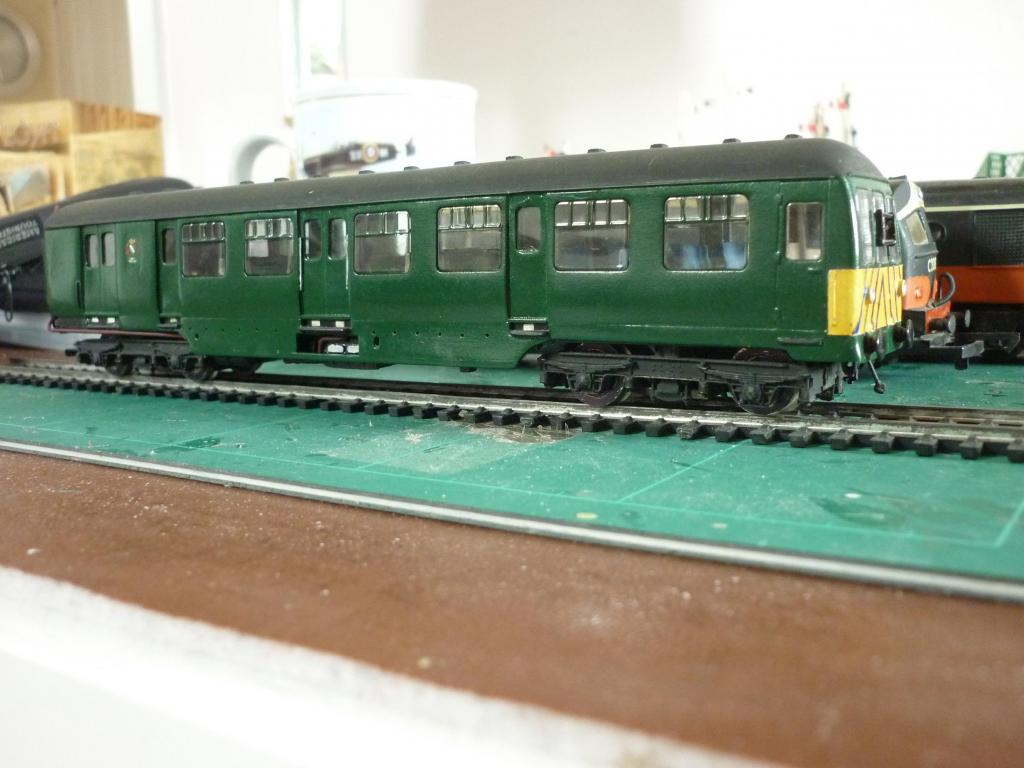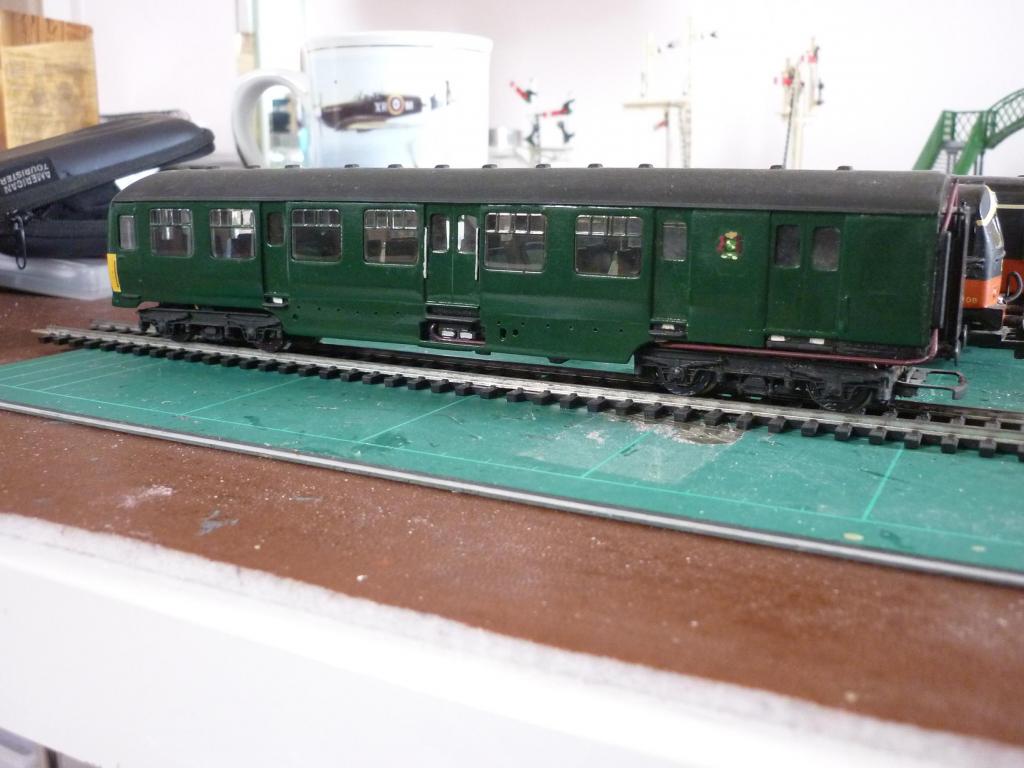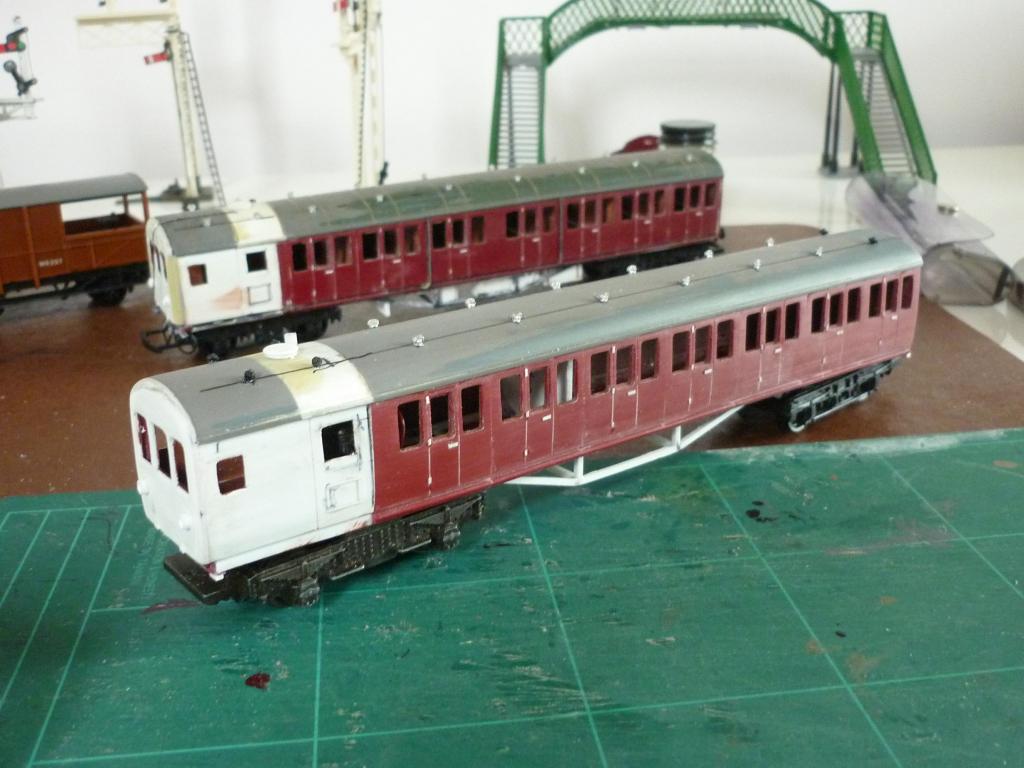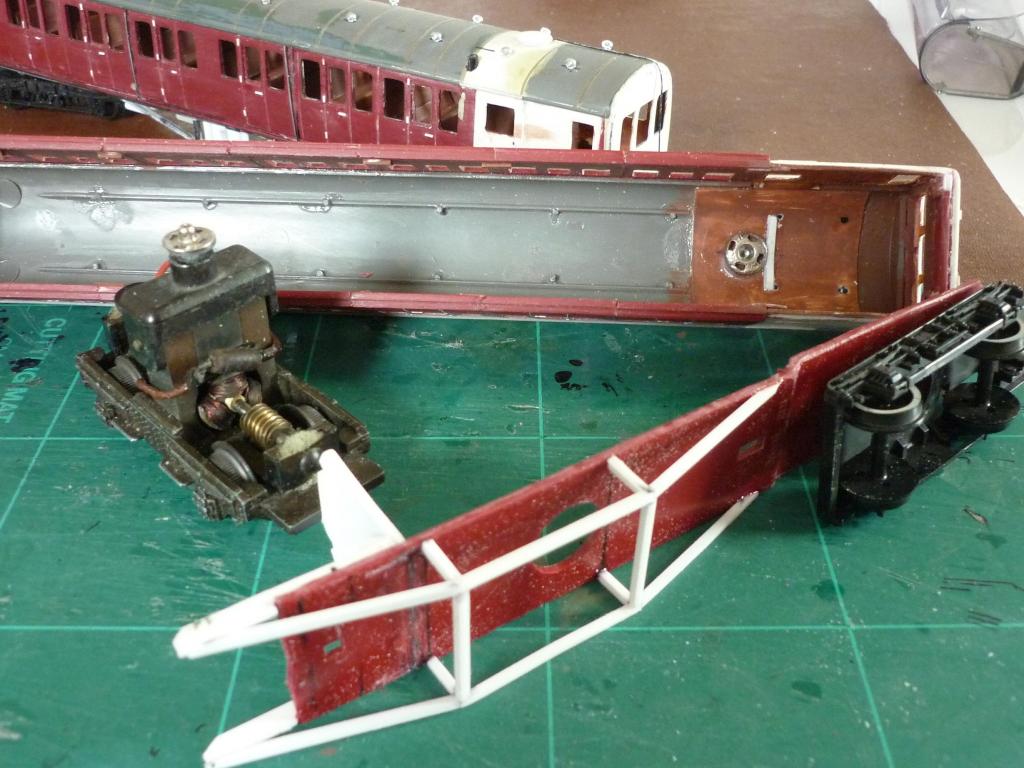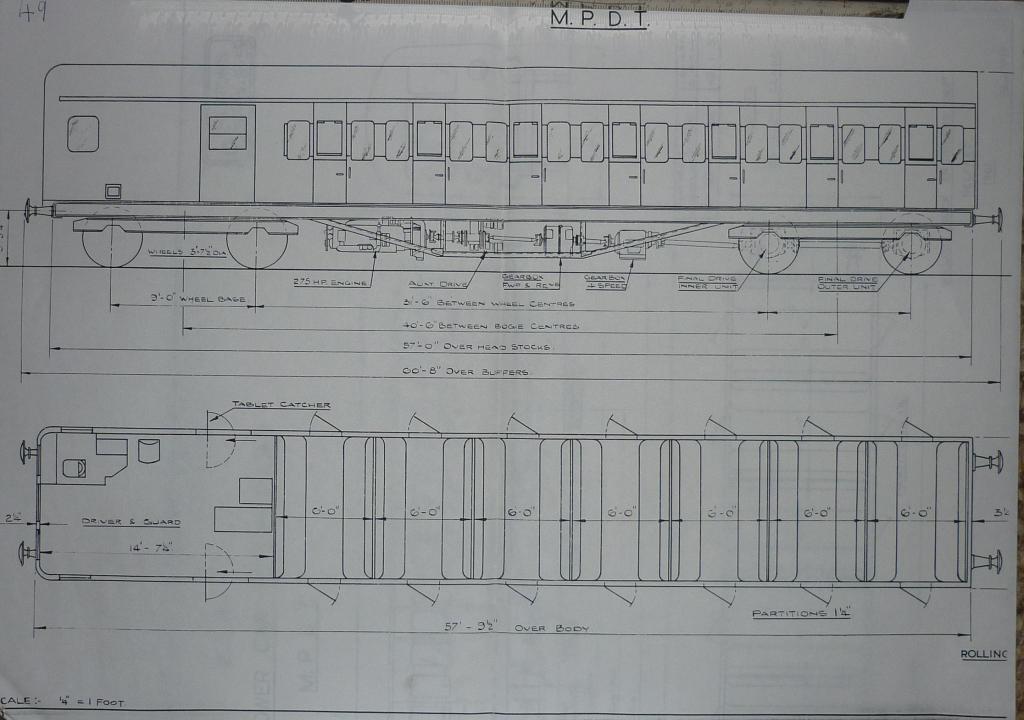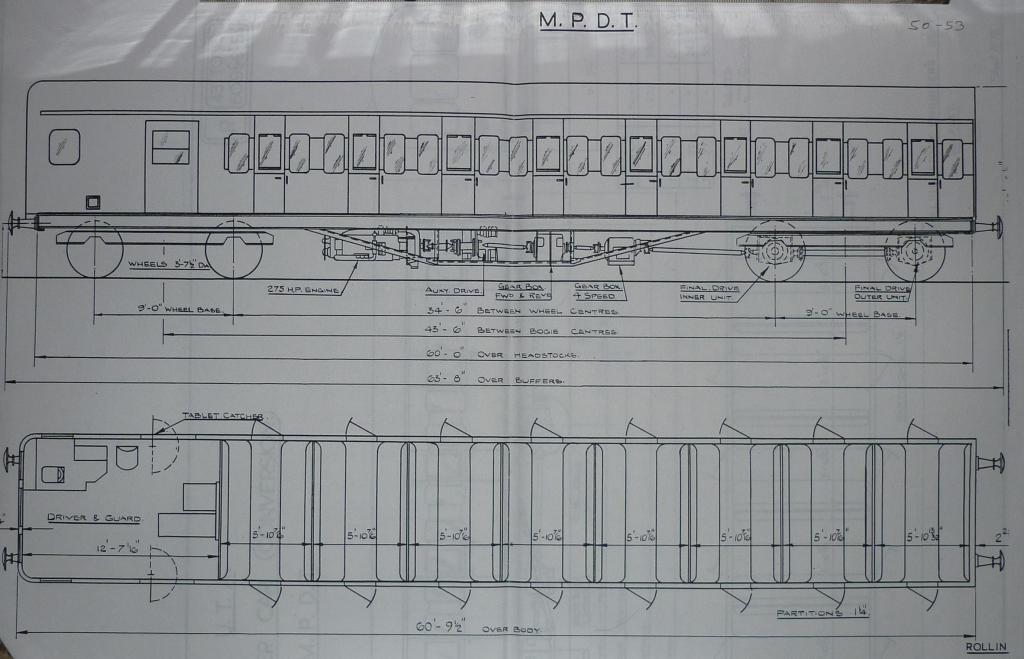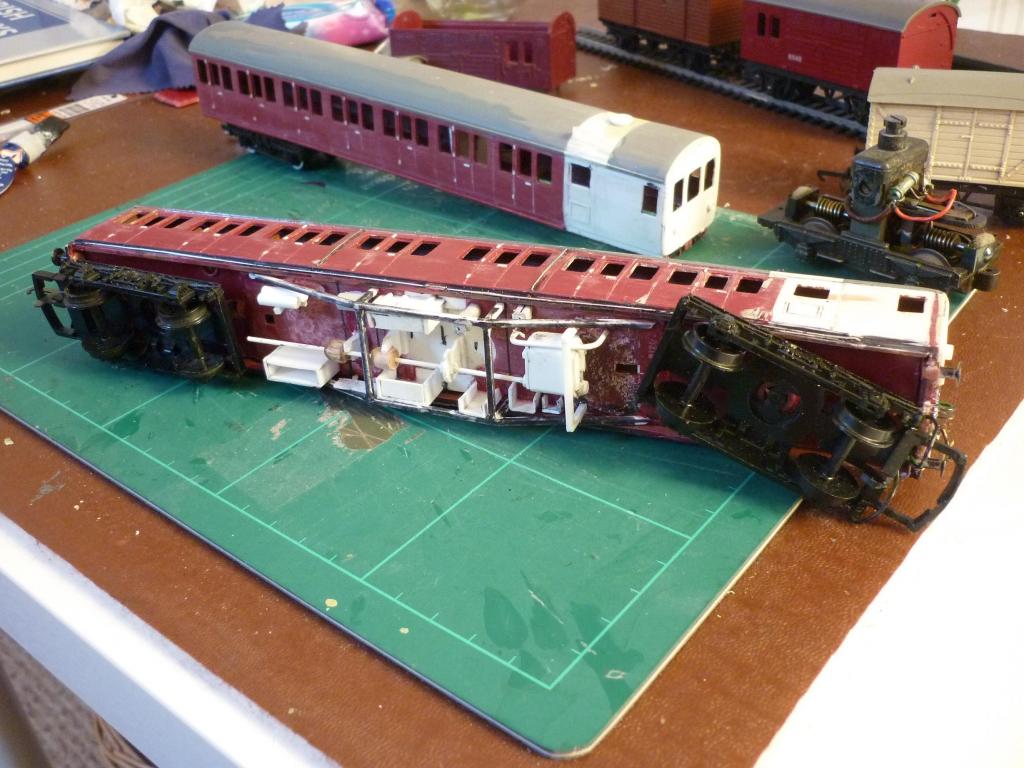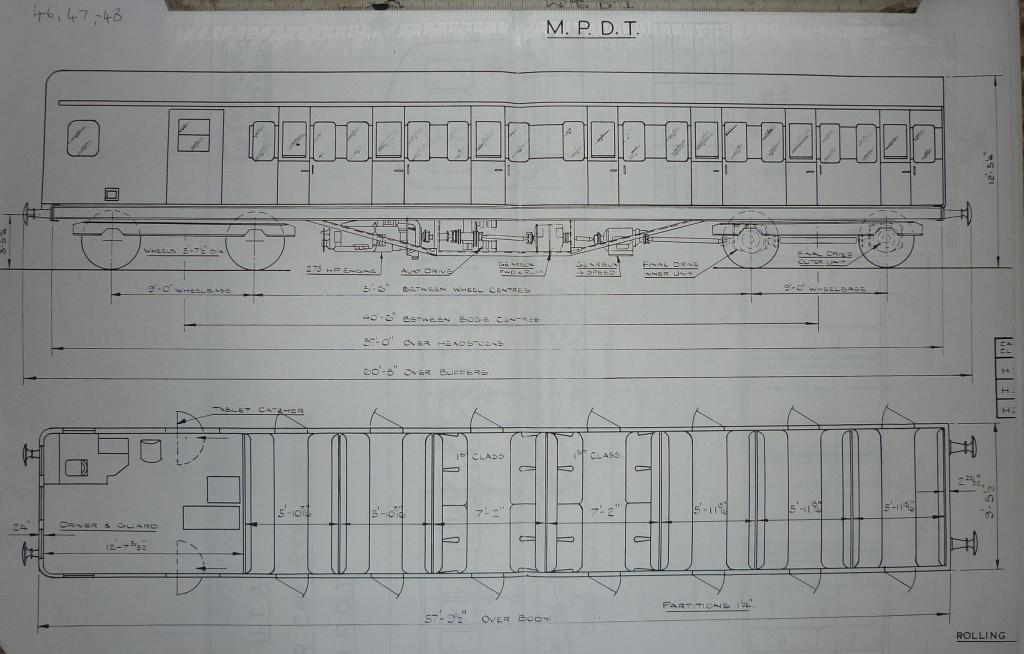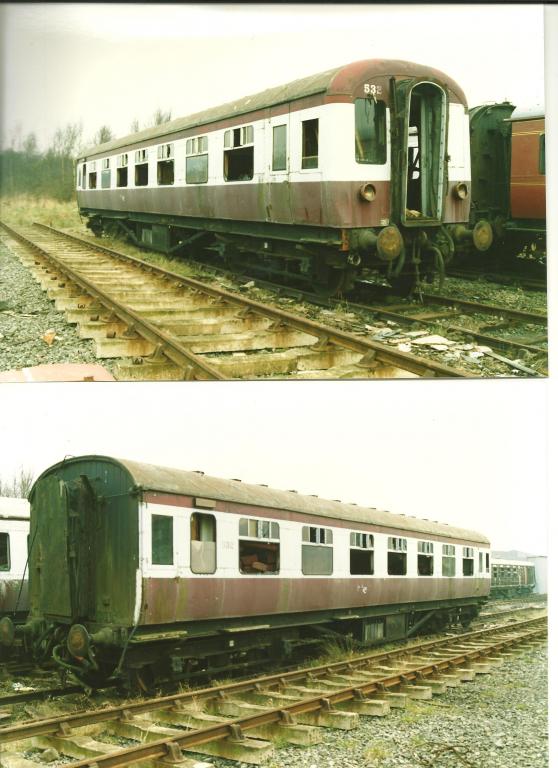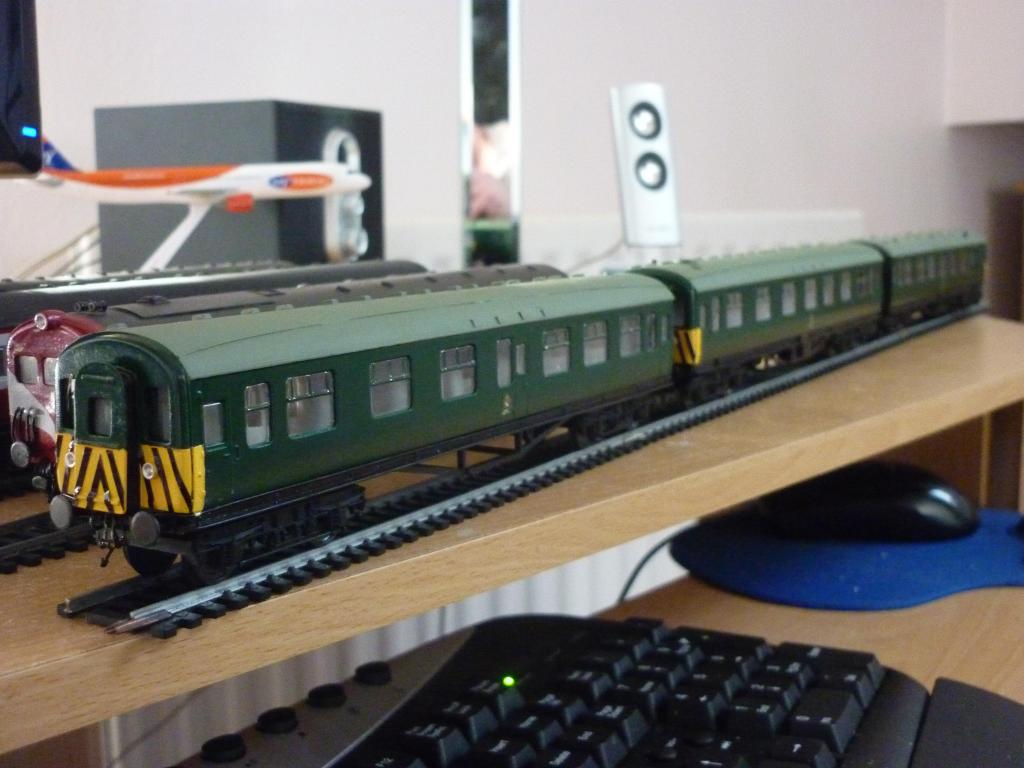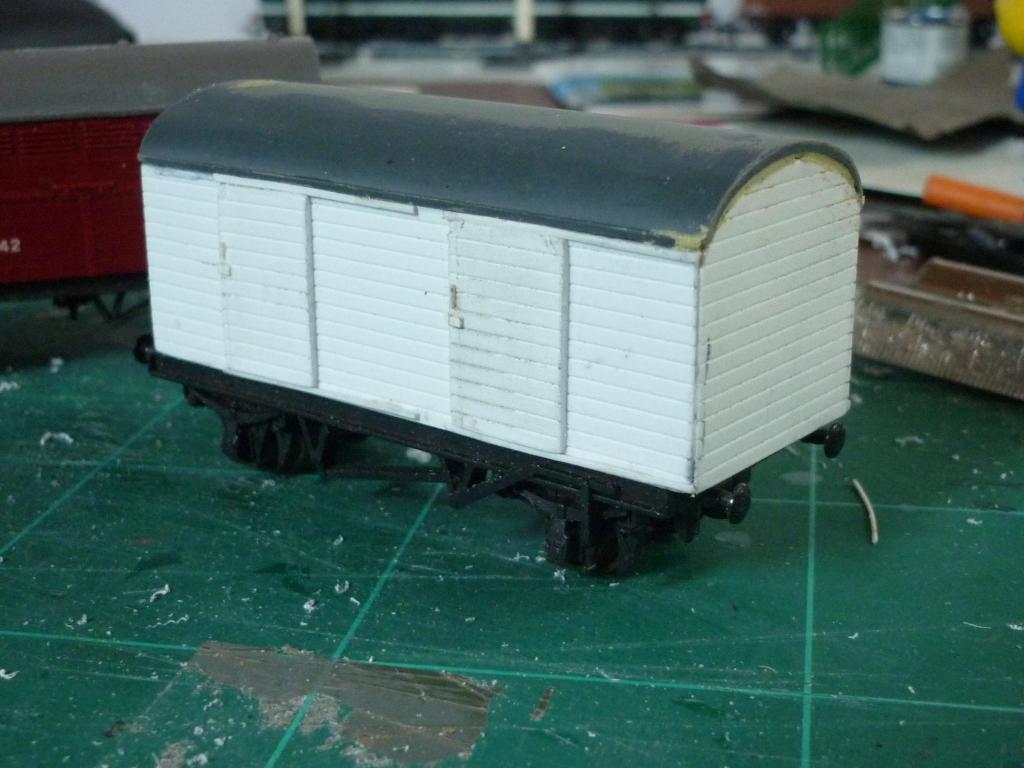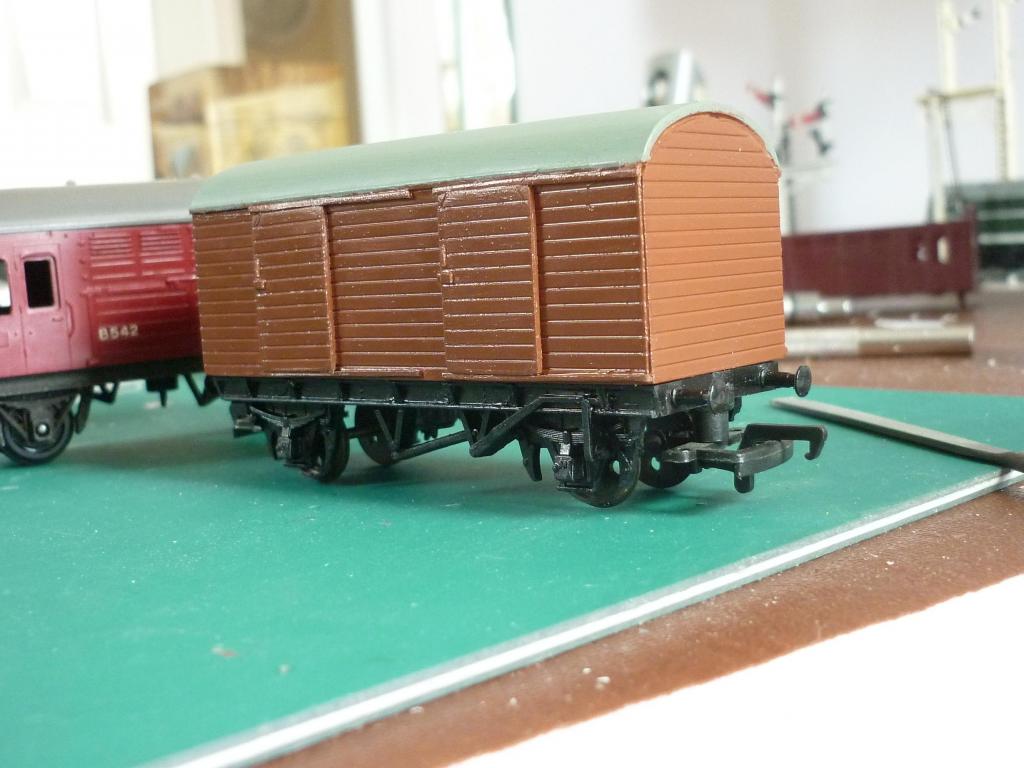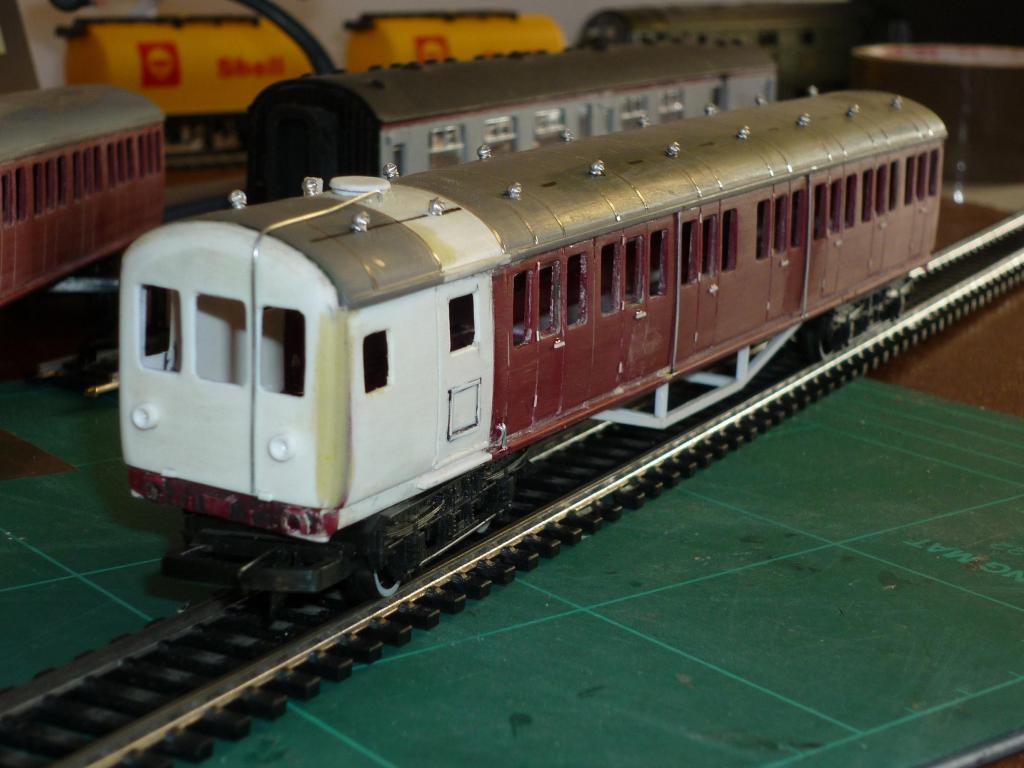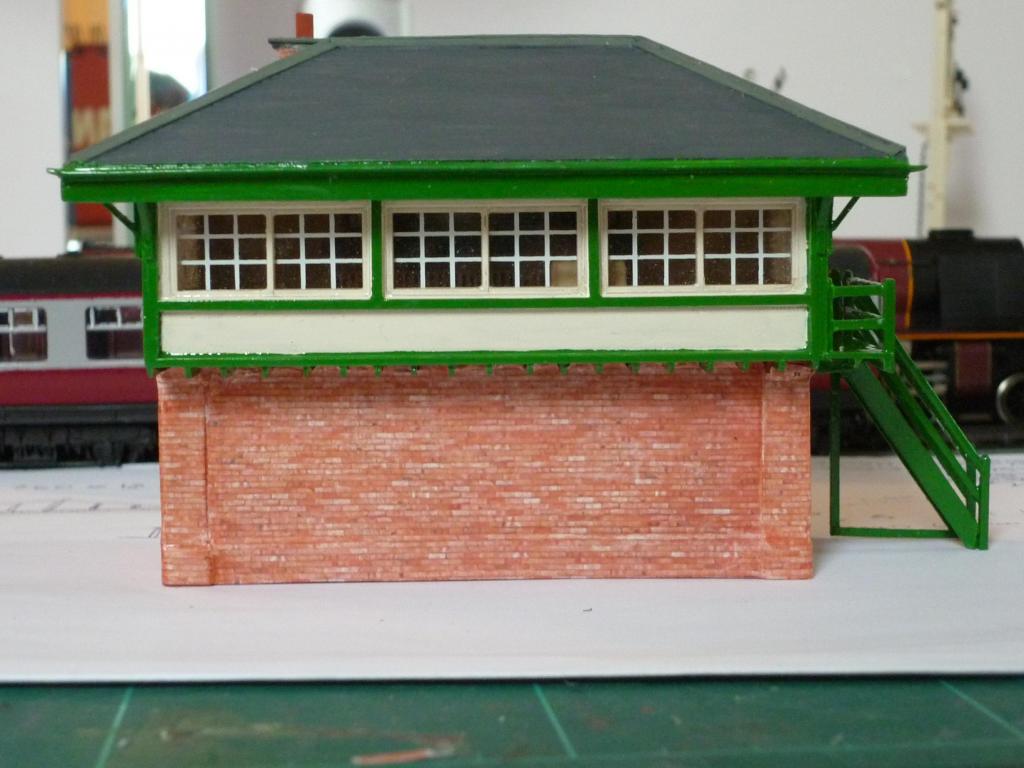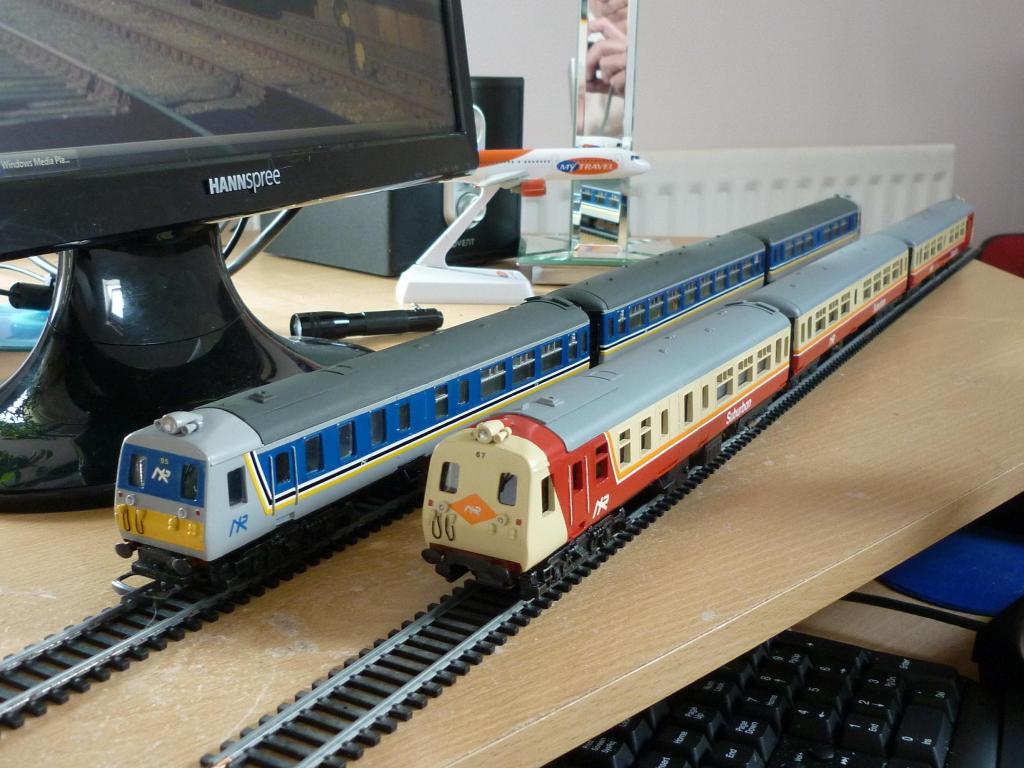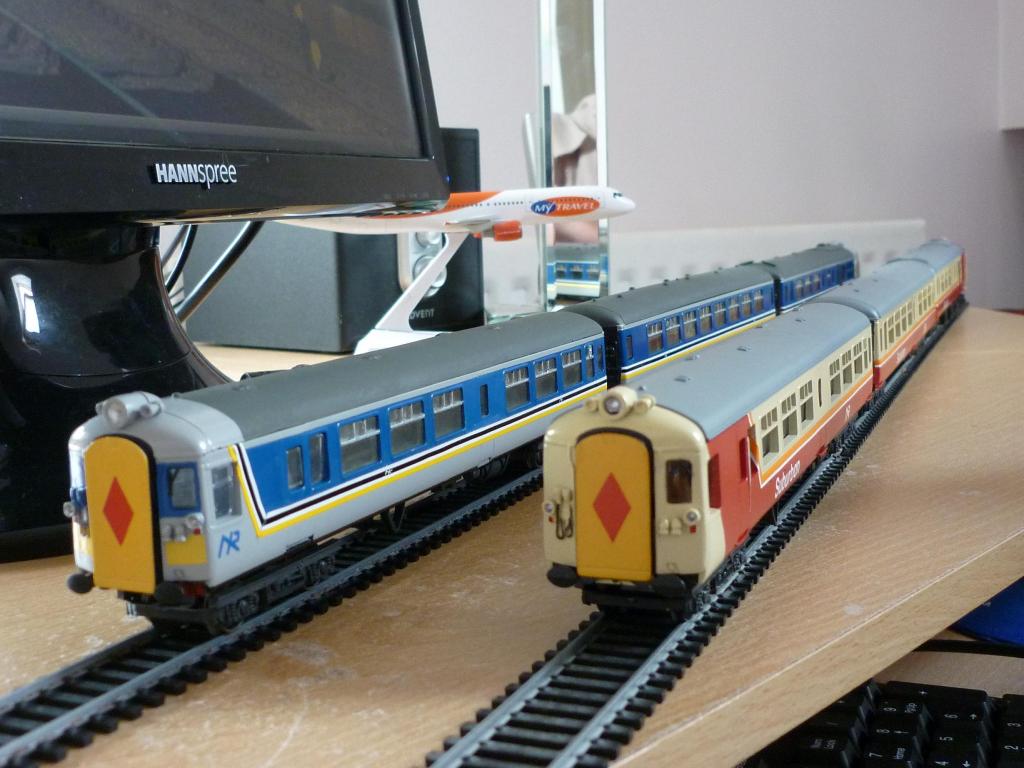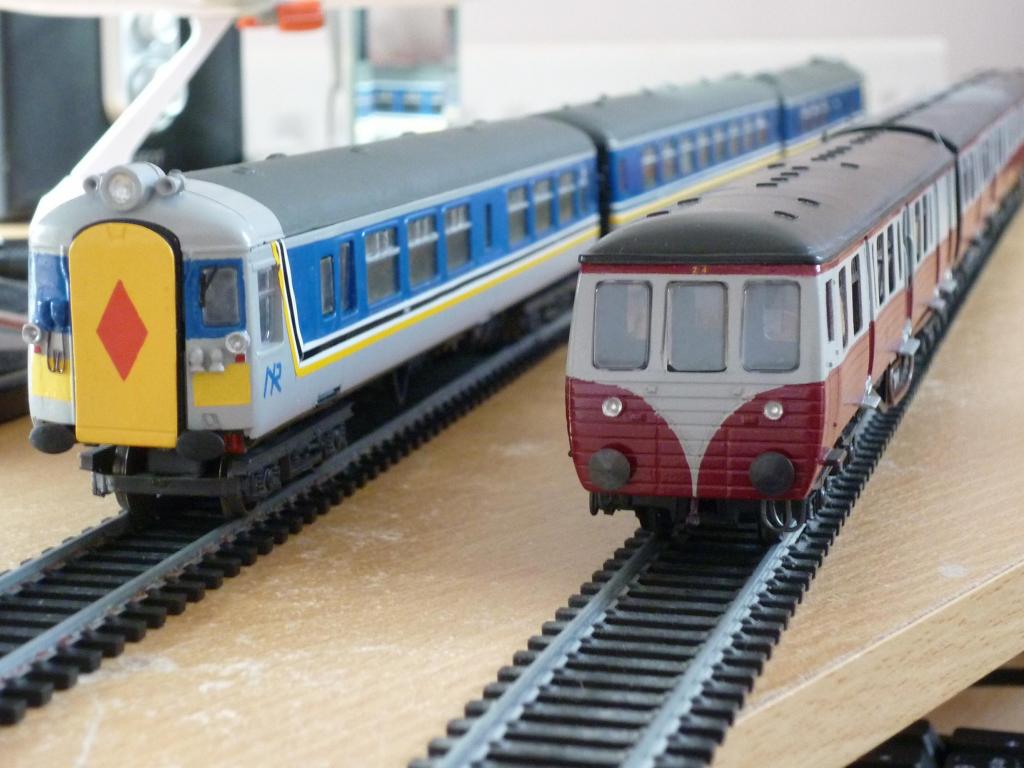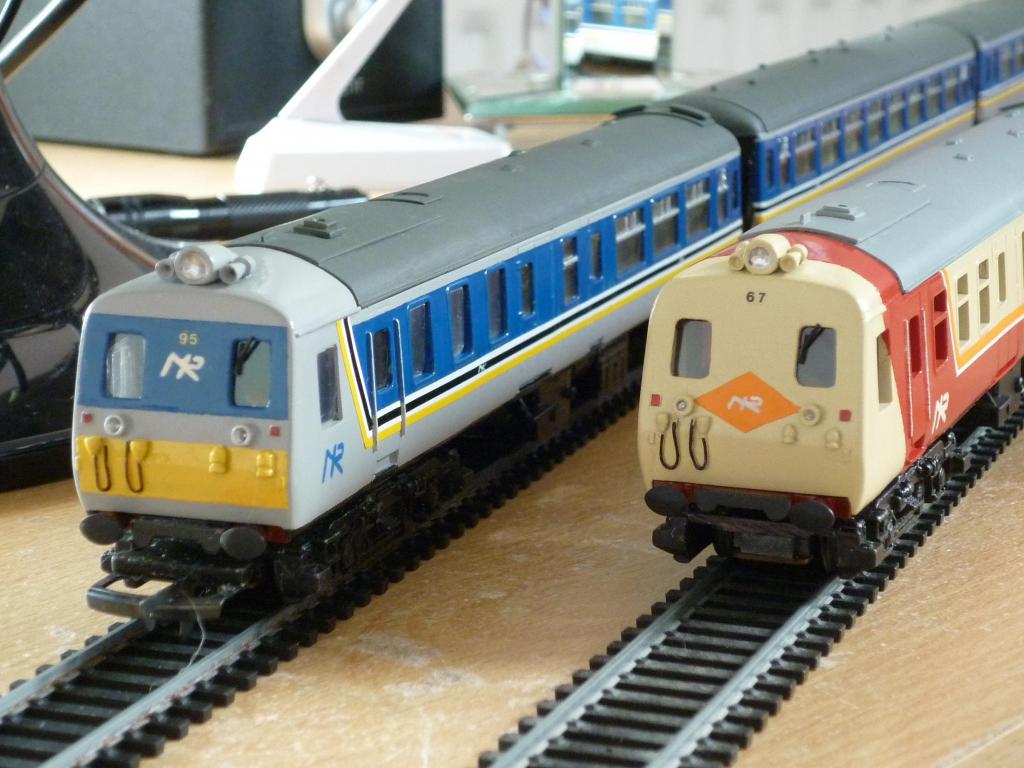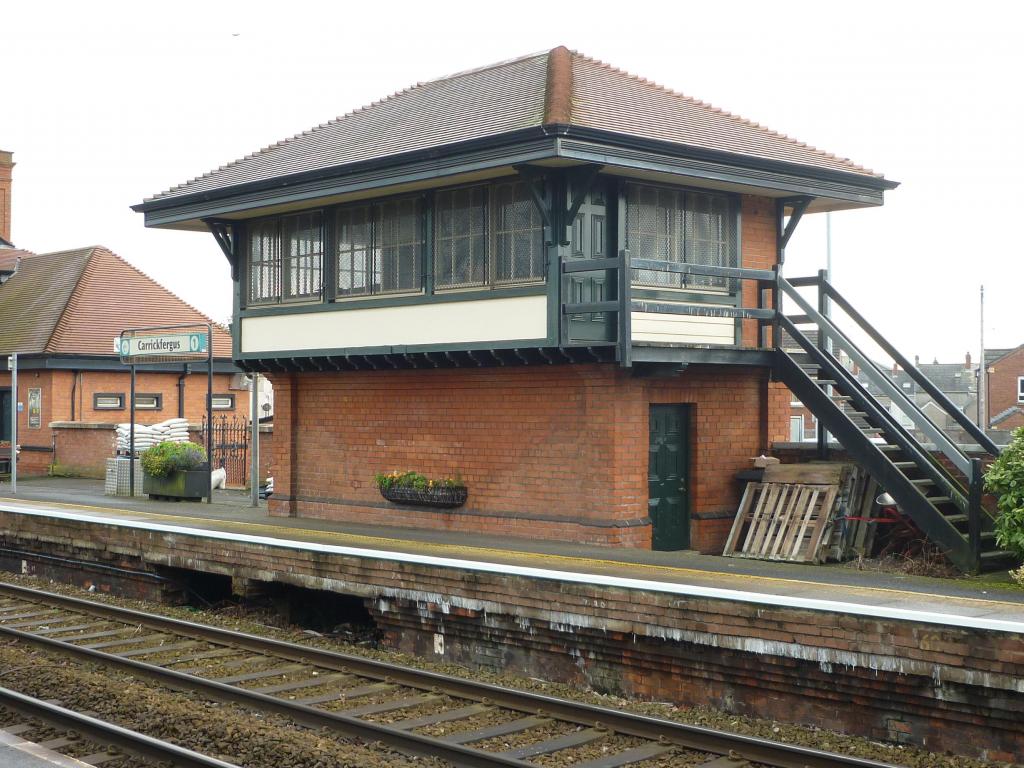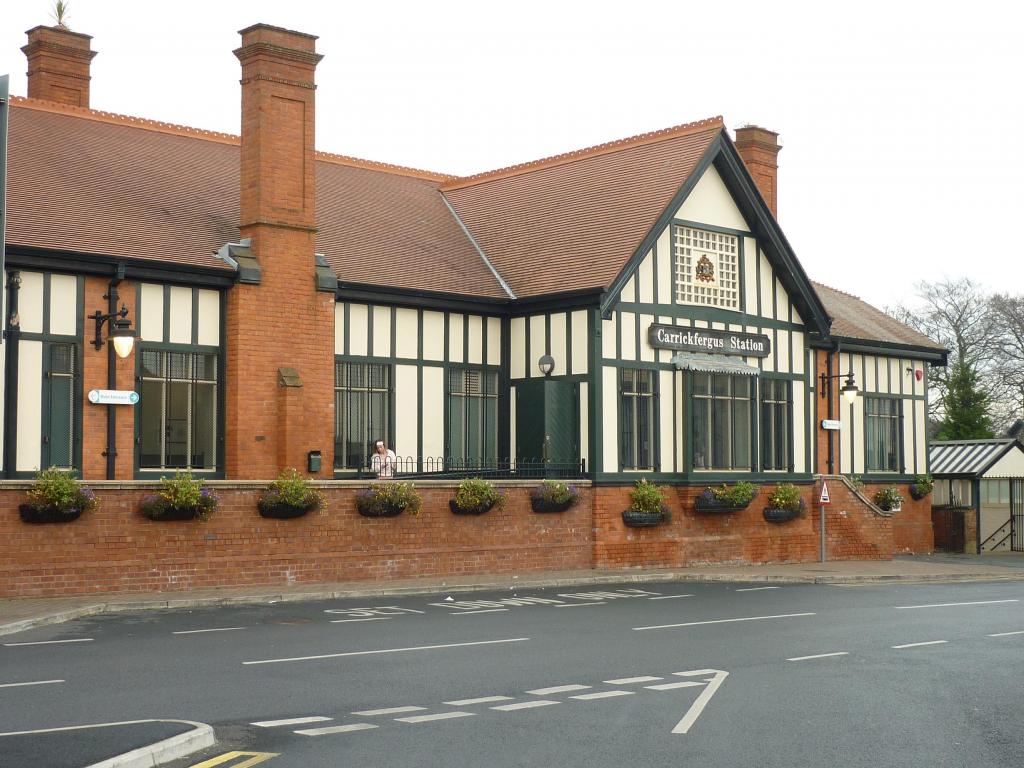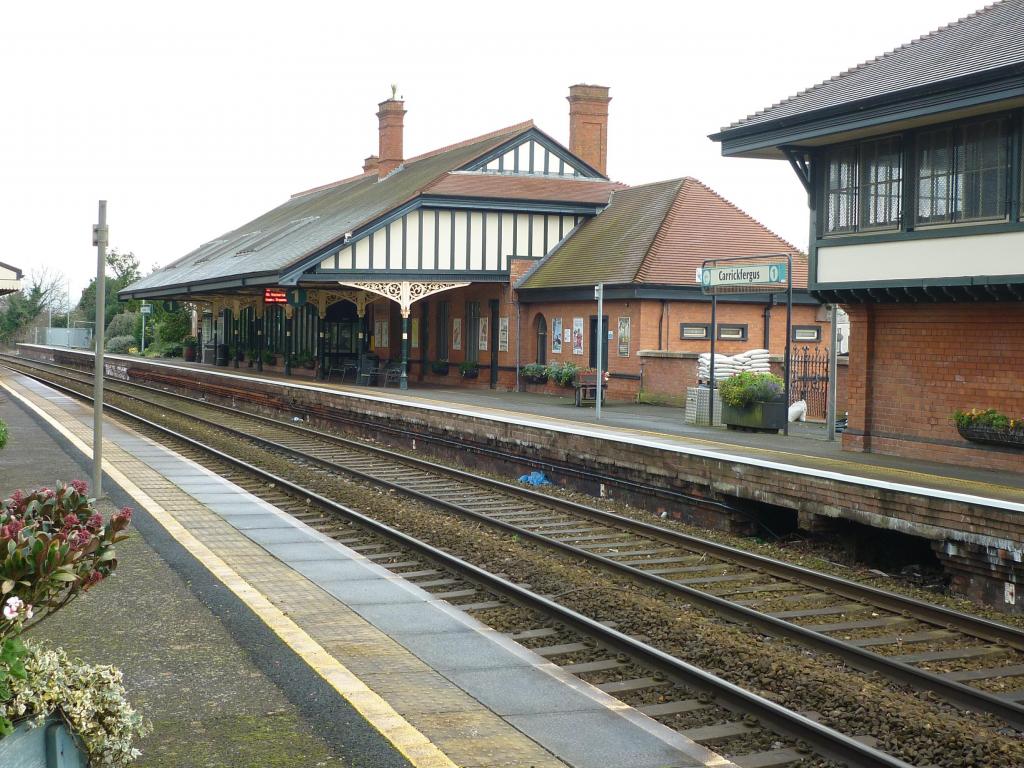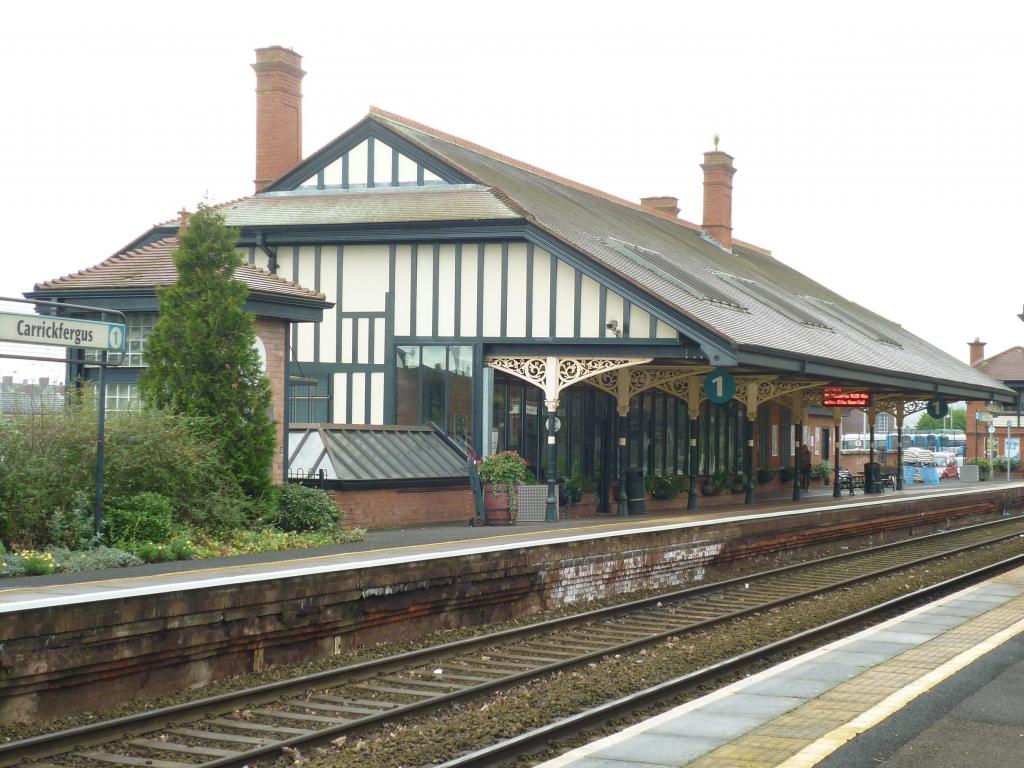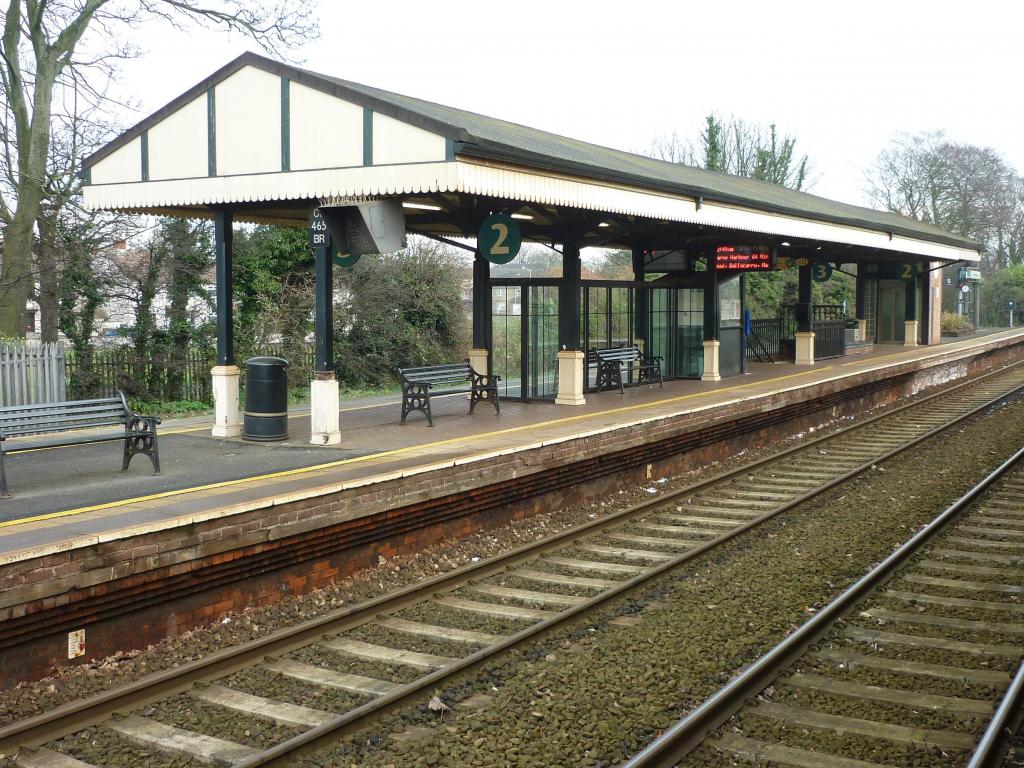-
Posts
183 -
Joined
-
Last visited
Content Type
Profiles
Forums
Events
Gallery
Blogs
Store
Community Map
Everything posted by 33lima
-
According to Oliver Doyle in 'Locos and Rolling Stock of IR and NIR', 3rd edition (1987), 'Following a special spoil movement contract for motorway construction in the 1960s, a number of redundant drop-hopper wagons were retained for permanent way use'. In Jonathan Allen's '35 Years of NIR', there's a colour pic of NIR DH 2 on a rake of these at Whitehead. The caption says 'On 7 October 1974, NIR began conveying spoil from Magheramorne to an oil jetty construction site at Cloghan Point near Kilroot. In a near-repeat of the former steam-hauled spoil trains, the same wagons were used although at first NIR's DH locomotives provided motive power. Finding these units wholly unsuited to the task, they were soon replaced by one of NIR's 101 Class Bo-Bo diesel electrics.' I have no idea what happened to the trio which I snapped at York Road about seventeen years later.
-
I've now uploaded these and most of my other pics to flikr. Still a few to come, over the next few days. http://www.flickr.com/photos/33lima/with/9531658310/
-
Back in 1992, I managed to get three of the Seacows in one picture - a herd, rather than a rake? There seem to have been two variants to these, some like the last one having a deeper horizontal upper end panel; they seemed to have lacked the BR vacuum gear and some had rails at only one end.
-

Northern Ireland Railways in the 1990s
33lima replied to 33lima's topic in Photos & Videos of the Prototype
-

Northern Ireland Railways in the 1990s
33lima replied to 33lima's topic in Photos & Videos of the Prototype
Just uploaded a few more, DEMUs on the Bangor Line plus the first of some taken at NIR & RPSI Whitehead. -
Yes but I mean, it hasn't even got knurled wheels! TBH I could use about four of those now but they'll have to wait for the economic upturn or the lottery win, whichever comes sooner.
-
Having found many useful pics on Flikr, I thought it only fair I should add some of my own like the one below, generally taken of NIR subjects in and around Belfast, in the early 1990s. More to follow as opportunity and inclination permit. http://www.flickr.com/photos/33lima/
-
Hi Kirley Not having had a layout to test it on, I don't know how well the pop-fastener method works, but Steve J had it fitted to an A Class and a C Class he'd built from resin kits and fitted with Hornby pancake motors, with the fastener stuck on top. So I assume they run at least adequately, tho like the original Tri-ang top bogie mount they may be vulnerable to the bogie pitching or the body wobbling a bit. The MPD model is approaching the point where a test run will be needed so I'll report back. My emerging layout is so far powered by a Hornby R965 (reportedly a good trainset controller with good slow-speed feedback control) and an ancient Dublo Marshall III controller which has a pulse power setting for slow running. Corax67 posted a short guide to fitting a DCC decoder to a tri-ang motor bogie here: http://www.rmweb.co.uk/community/index.php?/topic/28020-hello-from-plymouth/?p=292811&hl=+triang%20+decoder&fromsearch=1#entry292811 If I was starting again, I'd standardise on the Hornby SWB motor bogie as fitted to their Class 110 DMU and their HST. Power cars for the latter are widely available 2nd hand and the DMU's bogie frames are a clip-in replacement for the HST's. The powered and trailing/pick-up bogies can then be snap-fitted to the Class 110 DMU's power or centre-car chassis. I used this for my UTA green MED set. Hornby ringfield motors have their detractors but this setup gives me much less inaccurate bogie frames plus better pick-ups. I have to confess, tho, that I'm looking forward to hearing again soon, after all those years, the distinctive and purposeful sound on the track of the knurled wheels of the Triang DMU motor bogie!
-
Latest progress below. The power car has now had roof ventilators, door fittings and some other detail added to the bare bodyshell. I ran out of MJT cast torpedo vents and ended up using some Branchlines (not Bachmann Branchlines) plastic ones from an old coach fittings sprue. Underframe trussing has also been fitted. The attachment has also been fitted for the Tri-ang DMU motor bogie, using pop fasteners - a method I learned from Steve Johnson of 'Gazeteer' and 'modelling Irish Railways' fame. The female fastener was superglued to the roof underside, the other to a plastic rod screwed into the bogie's mounting block, which gave some height adjustment. I also took the opportunity to remove both cars' front buffer beams and re-fit them, as there was originally not enough overhang to the cab front. The power car is not as posted earlier a 50-53 series but 49, which has one compartment less. My guard's compartment ended up a bit short - I over-allowed for plastic lost in cutting and shutting all the original compartment sides - but he's not complaining
-
Haven't forgotten, Michael/Train Model!
-
Anyhow, I had opted to make a composite from the 46-48 series and an all third from the series 50-53. Power was going to be a venerable Tri-ang power bogie from the equally venerable Tri-ang R157 DMU. Soon I had the basic bodyshells of both cars built. I had only one interior seating unit and had to cut and shut this too, adding some extra compartment partitions and seats from plasticard. The seating was essentially rebuilt onto the former coach floor, originally moulded with the sides but now separate. I next returned to detailing the compo. I used (MJT?) cast ventilators for the roof, supplemented by cross-straps cut from parcel tape, a circular vent common to MPDs above the brake compartment from two discs cut from plasticard, and a plastic exhaust pipe down near the gutters on the RH side. More plasticard provided lights and other fittings. I fitted turned brass buffers in home-made plastic housings and added an etched brass screw coupling to the cab buffer beam. The tension-lock coupling at that end has had its hook removed and the bar cut back a bit and I may replace this with a wire loop or remove it altogether at some point. Florists wire was used to replicate various visible pieces of pipework. Door handles and hinges were originally raised detail which was lost when rebuilding; the door lines were scribed on and hinges and handles cut from plastic strip and fitted. Underframe trussing was from thicker plastic strip, and mechanical details were added from strip, wire and some pieces of wooden dowel. The UTA works drawings only show major components and I have had to rely on photo interpretation to sort out the rest of what's visible from the sides. Since I started, 'Diesel Dawn' appeared and features a hand-drawn layout scheme for MPD underfloor components but I am fairly certain that this is reproduced mirror image from the standard layout. Well, that's as far as I've got to date, except that having in the interim finished (barring any final detailing) my first NCC 'brown van', I have started the process of adding detail to the second MPD bodyshell, the one that will have the motor bogie. I'll post an update when there's something to report. As far as liveries are concerned, I plan on finishing them both in UTA brunswick green with wasp-stripes, which is how I recall these types. I was tempted to go with Eau de Nil/'Catherwood Blue' but will save that for a trailer or two for my UTA green set. Tho Derek Young in 'UTA in Colour' says that only one 'suburban' MPD was repainted in grey and maroon before they were rebuilt by NIR to open configuration, there is a pic online showing two suburban sets in maroon & grey (complete with MED-style white 'wedge' on the cab front) but I'll stick to the common dark green livery, with the wasp stripes which I believe were added after MPD 58 was written off after that argument with a car on the accommodation crossing near Bellarena in '59. Apparently the MPD - which photos show was in 'eau de nil' - ended up on its side, nearly upside-down, but more-or-less intact; but was burnt out when sparks from cutting gear during recovery fell onto upholstery and started a blaze the crew had to fight using water bucketed in from a nearby house...a losing battle as it turned out. Exit MPD 58, enter wasp stripes...!
-
Having renewed my interest about a year back I dug out all my old models and re-started work on the 'suburban' MPD set. Unlike my first two 'intercity' sets, this was going to represent a non-corridor compartment set, of which there were several varieties including power cars and 'mules' (as the unpowered MPD trailers were known). In the interval, my sources had expanded, having been joined by Colm Flanagan's excellent 'Diesel Dawn' (essential reading for anyone remotely interested in the subject) and other excellent sources such as Derek Young's superb 'UTA in Colour', Sam Somerville's 'NIR Runabout' (an excellent source fro UTA railcars in NIR days) and most recently, Derek Huntriss's 'Irish Traction in Colour', which includes a superb study of 'suburban' MPD sets at York Road. To be honest I'd intended to run Steve Rafferty's set as it was but he'd paint-stripped it before the swap. It was a basic conversion with a trio of windows in the brake end of two Tri-ang suburban coaches (as produced in the late 1950s and early 1960s), some side windows filled in, and sliding doors scribed on. Having acquired it unpainted I decided to do a more dramatic rebuild. The brake compartments on real MPDs were quite small and took up the space of at most a couple of former passenger compartments. Also the compartment spacing was much tighter than on the Tri-ang models. So I decided to do a 'cut and shut' job, removing the sides from the floor and razor-sawing the sides into sections which I re-assembled to give something approximating the correct compartment spacing. This was the point I picked up the work again, having to acquire a second coach - a non-brake version this time - as one of the originals could not be located. The rebuilt sides were assembled onto a lengthened roof, and a new cab front was built from plastic card on the old coach end, with the upper half cut away for the windows. Plasticard brake compartment sides completed the picture and I thus ended up with a coach nearer the correct length than the rather short Tri-ang suburban coaches. By this time of course I had been forcibly reminded of the stationmaster's advice to John Wayne at the start of 'The Quiet Man' about this not being the best place to start if you wanted to get to Inishfree (or build an MPD conversion) but I'd started and this time, twenty years later, I was going to finish!!!
-
Recently I re-started work on a 2-car MPD set, begun back about 1994. The immediate inspiration for this, back in the early nineties, was a Colin Boocock pic in 'Irish Railway Album', reproduced in typically 'muddy' Ian Allan 1960s fashion, showing a set at York Road in 1963; and some pics of a set Steve Rafferty had converted from a pair of Tri-ang suburban coaches. The latter came my way in part-exchange for an AEC set I built for Steve and formed the basis for this project, with a coach that went AWOL in the intervening twenty years being replaced by a recent eBay acquisition. The deeper inspiration for the model was my interest in the trains of my childhood. I was never much interested in steam, if only because of regularly getting an eyeful of soot when leaning out the carriage windows, as one was wont to do in those days, on a Portrush excursion. I didn't know the correct titles of the railcars I travelled on back in the 1960s and early 1970s on the Bangor and NCC lines but they WERE 'the train' to me. MPD unreliability may have come later because I don't recall them ever letting us down. Back in the early 1990s, a resurgence of interest revealed it was too late to experience them again, apart from snapping MPD trailer 532 on an ex-GNRI underframe at Whitehead. However, thanks to Mark Kennedy at the UFTM, I was able to acquire copies of a good many works drawings (many of which I have posted in my gallery at http://www.rmweb.co.uk/community/index.php?/gallery/member/15566-33lima/) and gradually followed up various leads and got a lot of help from many individuals and other sources, including articles in the IRRS journal and managing to arrange to meet and chat with both CME WAG MacAfee and designer Leslie Stafford (whose signature appears on many of the works drawings). Some mysteries remained - like the 'turquoise train' I recalled we used to see on the Bangor Line from Carnalea for a time in the early 1960s (was it a 'eau de nil' MPD on trial, or was it an unrecorded livery for an MED set, not just the one car recorded in cream and pale blue-green in 'Diesel Dawn'?) but many other details of the pioneering UTA railcars were revealed. First effort at an MPD set consisted of a very limited re-work of a trio of Hornby Staniers, as described in issue 1 of the newsletter 'Irish Lines' in December 1992 (archive available here:http://newirishlines.org/archive-2/ ). This NIR maroon set was soon afterwards re-worked to resemble something closer to real MPD vehicles and was then followed by another 3-car set, from similar base coaches but with rather more attention to detail. ...which brings my MPD projects up to the point of the current one, which I'll describe next.
-
Thanks for the positive feedback guys! I'll post a separate thread re the MPD.
-
First model railway project I've completed in 20 years (apart from a signal box conversion and excluding revived-but-not-yet-complete MPD and MED sets) - an NCC brown van, with another one or two to follow: Replacement plasticard body on a Tri-ang horsebox. Kept the latter's roof with the ventilators sanded smooth; didn't bother with rainstrips as many seem not to have carried these. Only underframe modifications were to move the brake V-hangars closer to the centrelines and trim the brake levers to match, tapering the ends of the headstocks and adding seven little support brackets each side. Tho the preserved specimens at Downpatrick seem to have W-irons outside the leaf springs, older pics seem to show external springs so I left them alone. Now, back to the MPD!
-
Sorry Train Model, tried again and this time I think it worked! Re model power Kirley, I know modern can motors and such wonders only by repute and so don't much miss what I've never had. Perhaps when I get my layout up and running I will yearn for better slow-speed performance but I think not. I can see a certain amount of 'motor snobbery' online and frankly don't much care for it. Anyway I have had a bit of a soft spot for Tri-ang DMU bogies ever since I had to 'borrow' one from my kid brother's Blue Pullman to power my MED set made from maroon Playcraft mk 1 coaches with Plasticine cabs, before the Tri-ang DMU came back on the market about 1970 and I repainted that instead. I even liked the racket the original ribbed-tyre wheels made - never mind all this modern traction tyre, scale profile wheel rubbish Apparently people turn their noses up at traction tyres these days - sic transit gloria motor bogie, and all that. My current suburban MPD project will be powered by none other than a Tri-ang DMU power bogie. Most of my other stuff is Hymek-powered tho my green MED uses the Hornby Calder Valley DMU chassis and bogies. The AEC and BUT sets I built for Leslie McAllister all those years back had Black Beetle power bogies if i recall right and although they had the advantage of better wheels, ability to accept any suitable bogie frame and IIRC didn't intrude into the body, I don't think they performed particularly better than their 30-year-older predecessors, on a test circuit anyway; their hauling power certainly seemed less, if anything. My layout - ballasting, a horror unknown from childhood layout days, is under way - will be an expanded version of my childhood Tri-ang Super 4 layout (with Airfix trackside stuff) ie a double-track circuit, unashamedly train-set - except that it will be very broadly based on Carrickfergus, and a fair bit bigger and with System 6 track, steel rails throughout. Pic of bashed Hornby Signal box below, should have reduced the height of the base a bit and replaced the stock glazing units to reduce the horizontal bars to one etc etc but it's not too bad for the UTA-era appearance.
-
Thanks for the kind comments folks (and have PM'ed Train Model). They are really fairly basic conversions of Lima Mk 2 coaches, with only the blue & grey set being flushglazed, and using Tri-ang Hornby Hymek power bogies, which was about all I could get cheaply back in the early 1990s. Hope actually to have a layout to run them on later this year, basically a bigger version of my last layout, a double track trainset loop my dad built us and sold back in 1974; except this time it should bear a passing reference to Carrickfergus rather than a quick Airfix model railways accessory catalogue shot.
-
The Spring 1993 issue of 'Irish Lines' is available here :https://www.dropbox.com/s/ci3elrw2itkh88t/Irish%20Lines%20-%20Issue%203%20-%201993%20Spring.pdf In it I described my efforts at making an 80 Class set from Lima Mk2 coaches. I ended up making two sets this way.
-
Carrickfergus is another excellent NIR station, little changed from the Good Old days...whenever THEY were...
.png.c363cdf5c3fb7955cd92a55eb6dbbae0.png)





